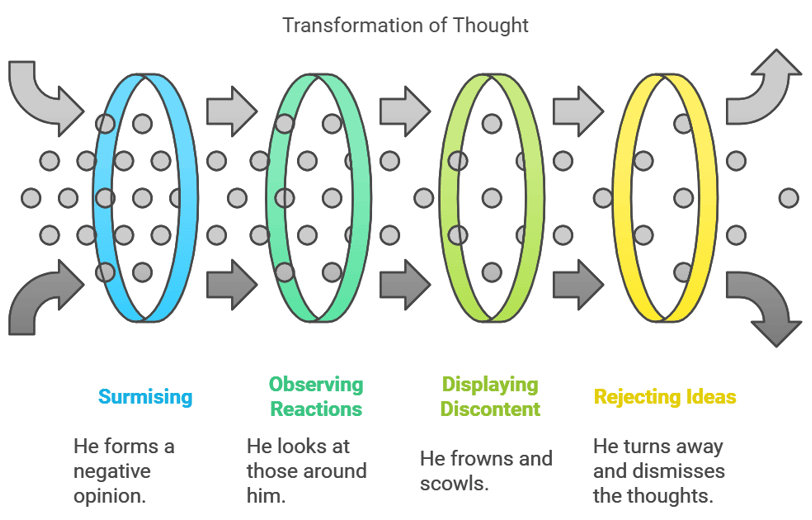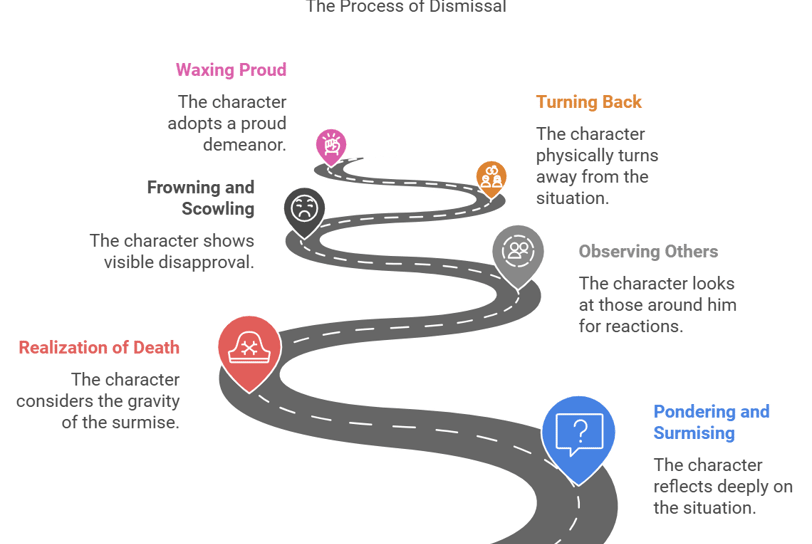Exploring Cognitive Dissonance in Light of Surah Al-Muddathir
Reflecting on the concept of cognitive dissonance can provide valuable insight into our own struggles with belief. It encourages us to examine the discomfort we feel when faced with challenging truths and to consider how we respond to these situations..
QURAN
LIBOIC
11/19/20244 min read


The concept of cognitive dissonance is well-known in modern psychology, describing the mental discomfort one feels when holding two or more conflicting beliefs, values, or attitudes. This blog aims to illustrate how the psychological processes of cognitive dissonance can be found within the verses of Surah Al-Muddathir (74:18-25). Let’s do a side-by-side comparison to see how the Qur'an portrays a person confronted with divine truth and their ensuing struggle.


Ayahs from Surah Al-Muddathir (74:18-25)
"He pondered and surmised."
"Death unto him! How (bad) is the surmise he put forward!"
"Again, death unto him! How (bad) is the surmise he put forward!"
"Then he looked (to those around him)."
"Then he frowned and scowled."
"Then turned his back, and waxed proud."
"Then said, 'This is nothing but traditional magic; this is nothing but the saying of a mortal.'"


The stages of cognitive dissonance provide a useful framework for understanding the reactions described in these ayahs. By examining each stage, we can better comprehend the internal struggle faced by someone when their existing beliefs are challenged by a new message.
Stages of Cognitive DissonanceAyahs from Surah Al-Muddathir (74:18-25)Comparison/Explanation
1. Dissonance Creation"He pondered and surmised."This stage represents the moment when the person evaluates the divine message, considering whether to accept or reject it. This contemplation generates an internal conflict because accepting the message challenges his pre-existing beliefs.
2. Perception of Inconsistency"Death unto him! How (bad) is the surmise he put forward!" (repeated)The repetition here underscores the psychological discomfort felt due to the inconsistency. He realizes that accepting the message would contradict his own interests, values, or beliefs, which leads to increased tension.
3. Feeling Discomfort (Dissonance)"Then he looked (to those around him)."At this stage, the individual starts feeling the mental discomfort of holding conflicting beliefs. Looking at those around him may signify seeking validation or support, reflecting his growing sense of unease in dealing with the message.
4. Motivation to Reduce Dissonance"Then he frowned and scowled."The person begins to show negative emotional reactions as a way to deal with the dissonance. Frowning and scowling are signs of stress and discomfort, indicating a motivation to reject the message to reduce dissonance.
5. Action to Reduce Dissonance"Then turned his back, and waxed proud."The person takes concrete actions to resolve the dissonance. Turning his back is symbolic of rejecting the message, while waxing proud suggests an attempt to protect his ego, thereby reducing the discomfort by refusing to acknowledge the truth.
6. Restoration of Cognitive Consonance"Then said, 'This is nothing but traditional magic; this is nothing but the saying of a mortal.'"The individual attempts to justify his rejection of the message by attributing it to traditional magic or the words of a mortal. This rationalization allows him to reduce cognitive dissonance by dismissing the message, thus restoring a sense of internal consistency.
Detailed Analysis
1. Dissonance Creation (Ayah 18): The individual contemplates the message, which leads to an internal conflict—should he accept or reject it? This is akin to the first stage of cognitive dissonance, where new information challenges existing beliefs, sparking discomfort.
2. Perception of Inconsistency (Ayahs 19-20): The repeated phrase, "Death unto him!", emphasizes the growing realization of a mismatch between his current belief system and the divine message. This recognition is accompanied by significant mental stress.
3. Feeling Discomfort (Ayah 21): The individual looks around for validation, reflecting his discomfort in dealing with the new information. The Qur'an beautifully captures this stage of cognitive dissonance—feeling torn between two belief systems.
4. Motivation to Reduce Dissonance (Ayah 22): The negative emotional reaction of frowning and scowling is a clear sign of the psychological struggle. These outward expressions indicate an aversive response to the discomfort caused by conflicting beliefs.
5. Action to Reduce Dissonance (Ayah 23): Turning his back and growing proud symbolize concrete actions taken to reject the message. In cognitive dissonance theory, this is when one chooses to disregard the information that challenges their established worldview.
6. Restoration of Cognitive Consonance (Ayahs 24-25): Finally, he dismisses the message as "traditional magic" and "the saying of a mortal". By rationalizing the message in this way, he seeks to justify his rejection and restore inner harmony.
Summary
The ayahs from Surah Al-Muddathir provide a profound depiction of the psychological journey of disbelief. This internal struggle is mirrored in the theory of cognitive dissonance, where a person is confronted with challenging beliefs and must find ways to reduce the ensuing discomfort. In this context:
The initial pondering and hesitation lead to the creation of dissonance.
Negative emotions, such as frowning and scowling, are efforts to cope with this discomfort.
The rationalization and rejection serve to restore a sense of internal balance by dismissing the divine message as incompatible with his existing beliefs.
This comparison highlights the timeless and universal nature of the struggle between truth and ego, as seen both in psychological theory and these Qur'anic verses.
